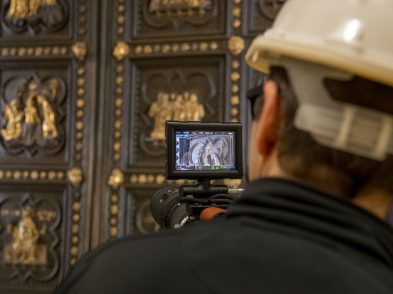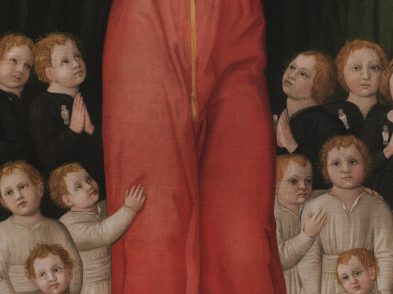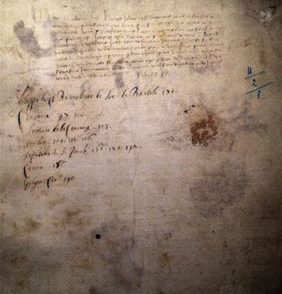Filmmaker David Battistella moved to Florence from Canada earlier this year to pursue his dream: writing and producing a feature film based on Ross King’s 2000 book Brunelleschi’s Dome, about the life of Filippo Brunelleschi and the building of Florence’s Cupola. This column, which began with TF 149, chronicles Battistella’s pursuit of his dream, including anecdotes of his new life in Florence and his efforts to finance and launch his ambitious project. He also shares his experience of being a ‘reverse immigrant,’ an Italian born abroad who returns to an Italy that is vastly different from the one his parents left in the 1950s.
Approaching Piazza Duomo, over which the regal Cupola has loomed for almost 600 years, one can only feel humbled by the intensity of the building. Reading books about how it is constructed of 29,000 tonnes of stone and then seeing it, in person, organized into its magnificent egg shape, can literally leave you scratching your head. Moreover, like all things truly Florentine, the Cupola has a personality, an energy that it collects, and then radiates.
Not far from the building, nestled near the Filippo Brunelleschi statue, is the Archivio del Opera del Duomo. The archive houses volumes of books that have been the key to unlocking some of the Cupola’s mysteries. Written in the 1400’s, the texts (written in both Latin and vernacular Italian) provide clues about how both the Duomo and its Cupola were created. For example, they offer a fascinating glimpse into the financing of the Cupola, for the ledgers hold detailed accounting of the building project.
Construction costs were covered by the state, and administered by Opera del Duomo. The church had no real control over the administration of funds for the construction process. This was left to the Opera, which received 3,000 gold florins each year from the state to build the Cupola.
The Opera was composed of a rotating group of members of Arte della Lana, the wool merchants’ guild, who were regarded as the best business minds of the day. Filippo Brunelleschi was paid a mere 36 florins per year to head up the project.
The accounting documents not only explain how the money moved and who was paid what and when, but they also contain notes about when and how things were invented and built, and by whom.
The books themselves are beautiful, written in calligraphic hand in sanguine ink on paper. They have stood the test of time. If you want a peek at what the books and paper look like, see some still images here: http://gallery.me.com/battistella#100106.
Moreover, thanks to the amazing work of two very dedicated women, Margaret Haines and Gabriella Battista, with the cooperation of the Opera and archivists and the Max Plank institute, the documents have been digitally preserved and translated. They are even available on the web: see www.operaduomo.firenze.it/cupola.
While the texts have survived for 600 years, I am hoping to create a modern living digital archive of the buildings. Even if I never make a film about Filippo Brunelleschi, I hope at least to be allowed to document the buildings in their current state.
I’ve also made some films in the Baptistery in order to show how important it is to digitally capture these precious structures. I hope to start filming the buildings this winter. My fingers are crossed.
Further, there is no digital film or photo archive of the Opera del Duomo’s assets. I hope to help change that. My experience as a documentary filmmaker and as the owner of some of the most advanced digital cameras in the world have inspired me to create a way to capture and preserve a digital archive of these important places.
Next time, I’ll tell you about how I met a famous Florentine goldsmith who taught me about how Filippo would have manufactured money and about the fine art of goldsmithing.








